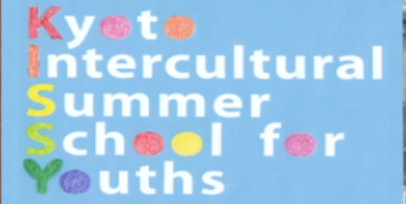We call our activities as "Pangaea Activities." Pangaea Activities are operated year round and target children aged 9-15. We offer our activities once or twice a month, and 10-25 children join each activity. We set up our activity rooms at community centers, local schools, and media centers run by universities. We provide two types of activity: "Local Activities" and "Webcam Activities".

Local activities

Local activities offer face-to-face interaction among children at each activity site. During the activity, children are allowed to utilize PangaeaNet, which is a safe and secure internet environment for children and an effective communication tool for those who are in different countries and time zones.

Children share their artwork, including animations, pictures, and drawings, with their peers through PangaeaNet. Children are also encouraged to exchange their feedback, using pictograms, called Pictons. Attending the year-round program can help children generate interest in different cultures, improve communication skills, and cultivate consideration for others.
>> Contents of Local activity
Webcam Activities

Webcam activities are designed to offer real-time interaction among children by networking multiple activity sites, both locally and globally. The activities currently take place a few times a year. Children who have already known each other through our local activities can develop a deeper sense of "bonding" by experiencing face-to-face communication and playing our original games via webcams.

According to our research, our webcam activities enable children to develop positive attitudes towards others. Since children can hear the voices and see the facial expressions of other children using webcams, they are more likely to bond with each other as playmates, regardless of geographical distance.
>> Contents of Webcam activity
PangaeaNet assists children in sharing their artwork, such as pictures and drawings, and exchanging feedback and pictogram messages. This year-round activity can help children heighten their interest in different cultures, develop communication skills, and foster consideration for others.
Tako Introduction
Since children tend to be shy when they meet new friends, we use this warm-up activity with the children in order to make them feel comfortable. Children are divided into pairs and asked to introduce their partners to the other participants. This enables children to easily share information about themselves and have fun experience with their peers.


PangaeaNet
We provide children with PangaeaNet, which is a safe and secure internet environment for children. PangaeaNet is a useful device for children to present themselves through their pictures, voices, and artwork. We designed PanagaeaNet for children to communicate with each other, using pictograms, so called Pictons, in order to overcome language barriers.

We developed PangaeaNet as a virtual world, consisting of four types of communities: "House", "Village", "Country", and "Earth." The communities differ based on levels of interaction. It takes four clicks to move from House to Earth. We created a cyberspace museum, Pangaeum, placed at the top of the virtual world. Pangaeum is used as a display room for children and also a place where children can show their artwork and exchange feedback.
We strictly protect the privacy of our users: every user needs to obtain a one-day password to access PangaeaNet.

Rooms, Houses, and Villages
Children create their own virtual rooms, houses, and villages to introduce themselves to their peers. We work with the children to draw their own rooms and houses, and then scan them into the computer. Children post their own photos on their house windows and design their door name plates; they put their artwork and information about themselves into their cyber rooms. Children are also engaged in group projects to draw villages that represent their cultures.

Pangaea Playing Cards
Pangaea makes its own playing cards with children: the four suits symbolize our activity fields, such as Tokyo, Seoul, and Vienna. Each rank depicts an element relating to children's daily lives: "Ace" represents their school clothing or school uniforms, and "2" describes the children's favorite places to play. Children work together at every activity site to make their own original playing cards featuring their countries and everyday lives.

Animation
Children create their own original animation clips, using the animation software "Viscuit" developed by Dr. Harada, a researcher at NTT Communication Science Laboratories. Children are able to animate their drawn images. They are also able to learn how to make their own games.
Children are provided with our webcam activities a few times a year. Our webcam activities offer real-time interaction among children, networking multiple activity sites both locally and globally. Children who already know each other through exchanging messages can gain a deeper sense of bonding by experiencing webcam communication and playing games.
Koetsuna
Two teams compete to see who can say "Pangaea!" the loudest. We call it a "Vocal Tug of War." Children are more likely to get nervous when they are engaged in cross-cultural interaction. This activity enables children to ease their tension and enjoy the other webcam activities.


Matching Game
We split children into multiple cultural groups: each activity group must include children who are in different countries. We show children a single word, and working in their groups, children find responses associated to the given words. Children who are in the same country talk about association words that they think might pop into other children's heads, and then they write them down. Children go back to their own groups and give their responses via webcams. A group member earns a point for his/her team mate, who is in a different country, by writing down the same answer. This activity can help children to enhance their knowledge and understanding of different cultures.








